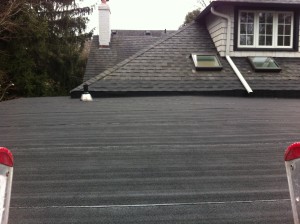Importance of Roof Flashing
The roof of any structure is the most overlooked feature. Not only do building owners take it for granted, architects and unfortunately, some roofing companies, don’t spend the time to properly seal the roof from the effects of wind, rain, and snow. One key feature that is taken for granted by many is the flashing. Just what is the purpose of flashing? Let’s have a look.
Valley Flashing
If you have a sloped roof, often you will have two or more sections of roof joining one another to form a V-shape section. This is called a valley and requires flashing to be properly installed. In a heavy rain, the water will merge from the sections of the roof and flow down the valley by way of gravity. It is important that the valley is installed properly, and the shingles are installed in such a way that it prevents water from seeping back under the shingles.
A routine inspection by a roofing contractor or even a quick look by the building owner will show if the flashing is doing its job. Check for lifting or loose shingles where water can seep under. Repairs are relatively inexpensive and can save you a lot of headaches down the road.
Pipe Flashing
The most common type of flashing is pipe flashing. It usually has a rubber bonnet installed and slides over the pipe, and the roof shingles are installed around the bonnet. Properly installed, this type of flashing will last as long as the roof but does need to be periodically inspected for potential problems.
Chimney Flashing
Whenever a chimney protrudes through the roof, proper flashing must be installed to prevent leaks. In this situation, a base flashing is installed first followed by a step-flashing. This is layered going up the roof around the chimney and installs into groves cut in the mortar of the chimney. The shingles are then overlapped over the flashing, and a final layer is placed overtop and left loose to allow seasonal movement.
This area needs to be checked to make sure the caulking used to seal the joints of the flashing is in tack and not cracked, missing, or loose.
Skylight Flashing
Often an area where leaks occur, skylights need special attention to avoid interior damage. A skylight is a sealed hole in the roof and often succumbs to the elements and starts to leak long before the roof needs replaced.
A skylight should only be installed by a qualified roofing company experienced with skylights and proper sealing techniques. The skylight itself usually comes with gaskets installed, but it still needs to be properly sealed and installed or leaks are guaranteed.
Don’t wait until you have a leak to get your roof inspected. An annual roof inspection is a low-cost way of preventing leaks and possible damage to your building.
Contact Essential Flat Roofing today for all your roofing needs!

